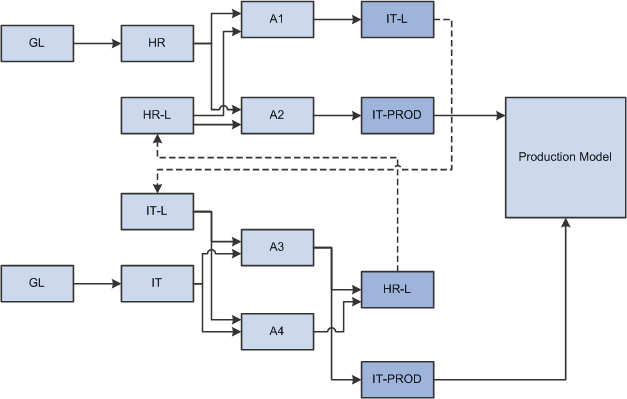Understanding Reciprocal Allocation Looping
Activity-Based Management's Reciprocal Allocation Looping feature enables you to define cost allocation among resources sharing each other. For example, your organization probably has departments that share costs with each other, in which case you can only determine the actual costs of these resources after they complete their respective allocation of cost to each other.
To use this feature, you define a single, shared-service model that includes all reciprocal Activity-Based Management objects and activities. The resources allocate cost to other resources, which you define as cost objects with the same name as their resource counterparts. The allocation executes based on the processes performed by the resources. Once the allocation is complete, the cost from the cost object loops to its resource counterpart and repeats allocation. The allocation loop continues until the percentage difference of the cost of the resource and its cost object counterpart is within a tolerance limit you define, or until a maximum number of loops have been performed. Any residual cost is then allocated to an Activity-Based Management production model using existing interunit drivers. You are able to allocate any residual cost remaining after the looping is completed because the targets of residual amounts often serve as sources for further allocations. The residual amount is prorated based on interunit assignments. The looping cost never goes back to the resources, it goes to a looping cost object.
Image: Reciprocal Allocation Looping process
The following diagram illustrates the Reciprocal Allocation Looping process.

Some important facts to remember with reciprocal allocation looping:
Objects with identical names to the resources are included in the looping process.
Looping continues until either a percentage tolerance is reached or the maximum number of loops as defined in the Models component is completed.
Percentage tolerance values and the number of loops determine the size of the residual value and the processing time.
Looping assumes 100 percent allocation.
Residual values use interunit drivers.